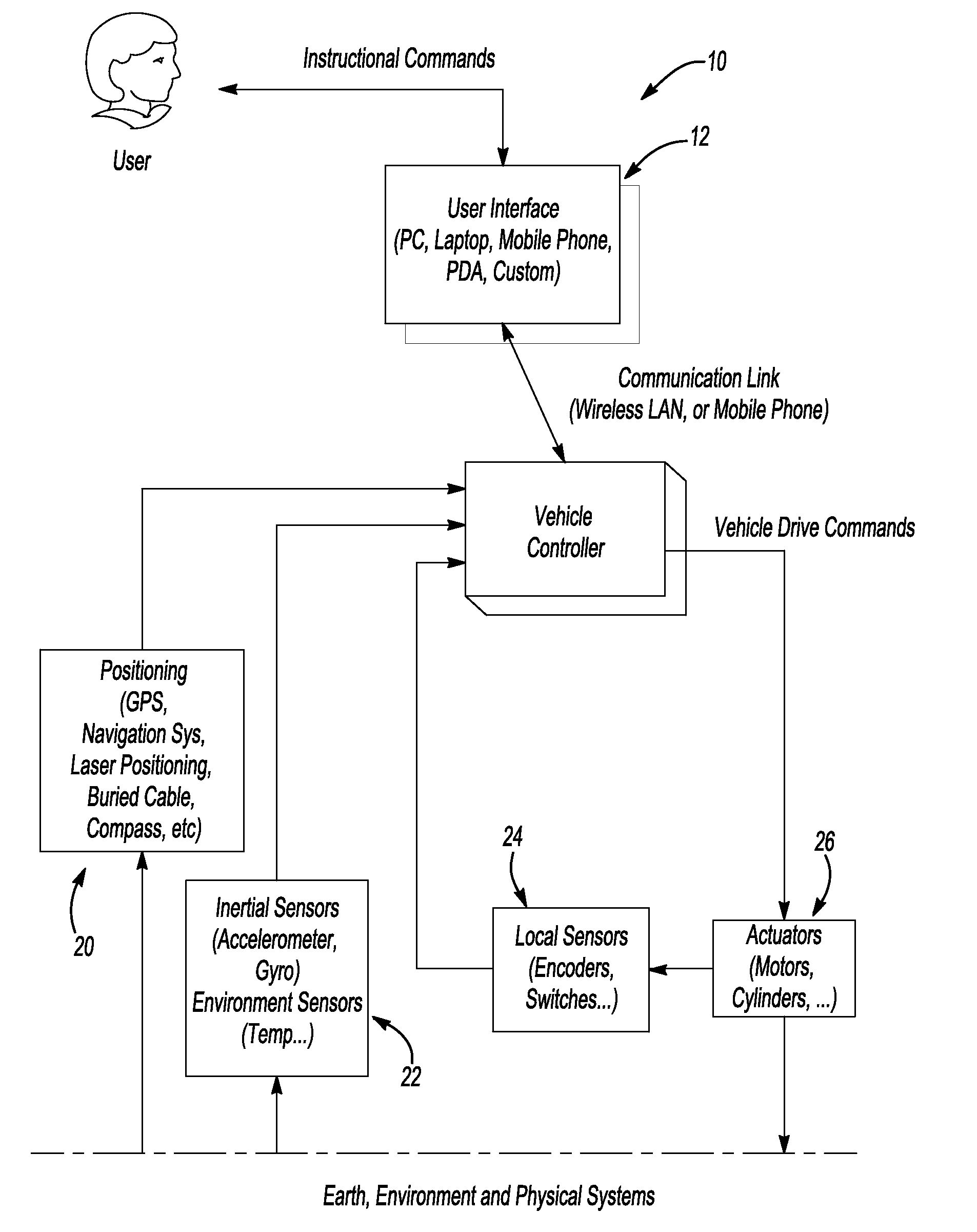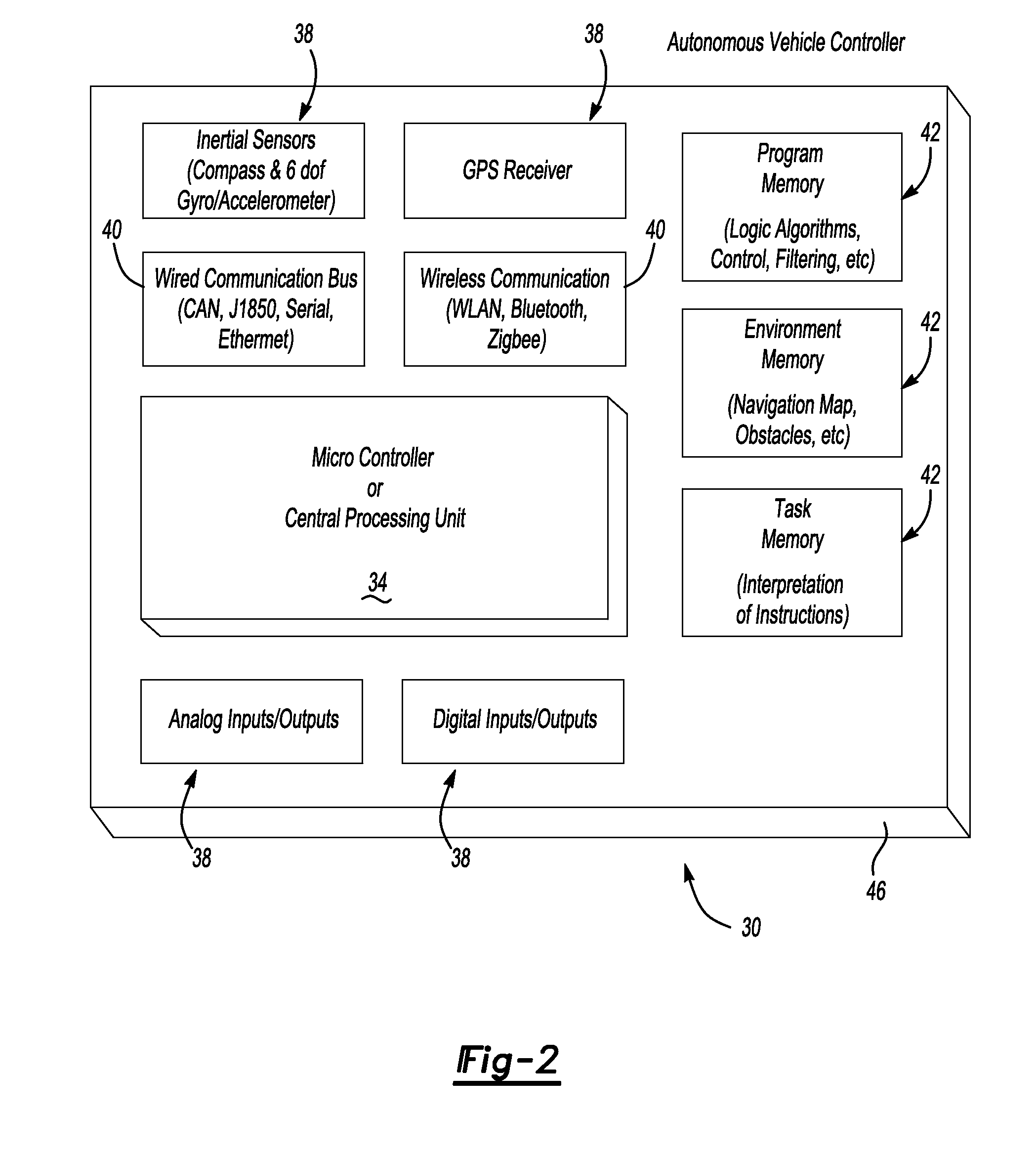Autonomous vehicle controller
a technology for autonomous vehicles and controllers, applied in the direction of process and machine control, distance measurement, instruments, etc., can solve the problems of prohibitively high cost of retrofitting vehicles to achieve autonomous control, and the control system cannot be easily replicated for other vehicles
- Summary
- Abstract
- Description
- Claims
- Application Information
AI Technical Summary
Benefits of technology
Problems solved by technology
Method used
Image
Examples
Embodiment Construction
[0013]The present invention includes an autonomous vehicle controller (AVC).
[0014]The AVC may be used to provide autonomous control to many different types of vehicles. Autonomous control means that after initialization, the vehicle moves and / or accomplishes one or more tasks without further guidance from a human operator, even if the human operator is located on or within the vehicle. The period of autonomous control may range from a less than a minute to an hour to several hours to several days or weeks at a time.
[0015]Suitable vehicles also include transportation vehicles such as automobiles, boats, submarines, airplanes, helicopters, or the like whose primary purpose is to transport passengers. Suitable non-transportation vehicles include those whose primary purpose is to accomplish a task other than transporting passengers such as moving inventory, cargo, construction materials, or natural materials (e.g. ore) or providing information about an environment such as scanning for t...
PUM
 Login to View More
Login to View More Abstract
Description
Claims
Application Information
 Login to View More
Login to View More - R&D
- Intellectual Property
- Life Sciences
- Materials
- Tech Scout
- Unparalleled Data Quality
- Higher Quality Content
- 60% Fewer Hallucinations
Browse by: Latest US Patents, China's latest patents, Technical Efficacy Thesaurus, Application Domain, Technology Topic, Popular Technical Reports.
© 2025 PatSnap. All rights reserved.Legal|Privacy policy|Modern Slavery Act Transparency Statement|Sitemap|About US| Contact US: help@patsnap.com



